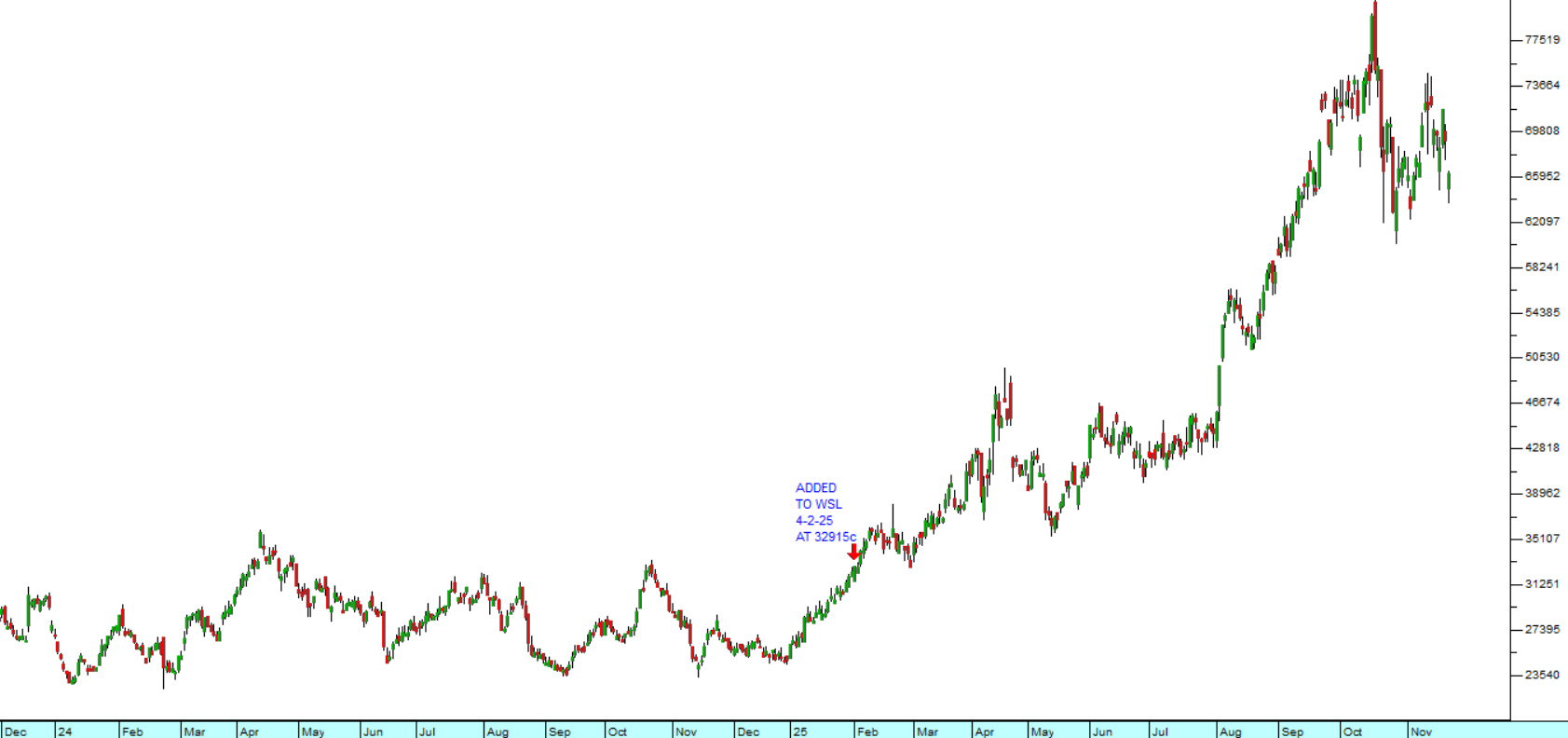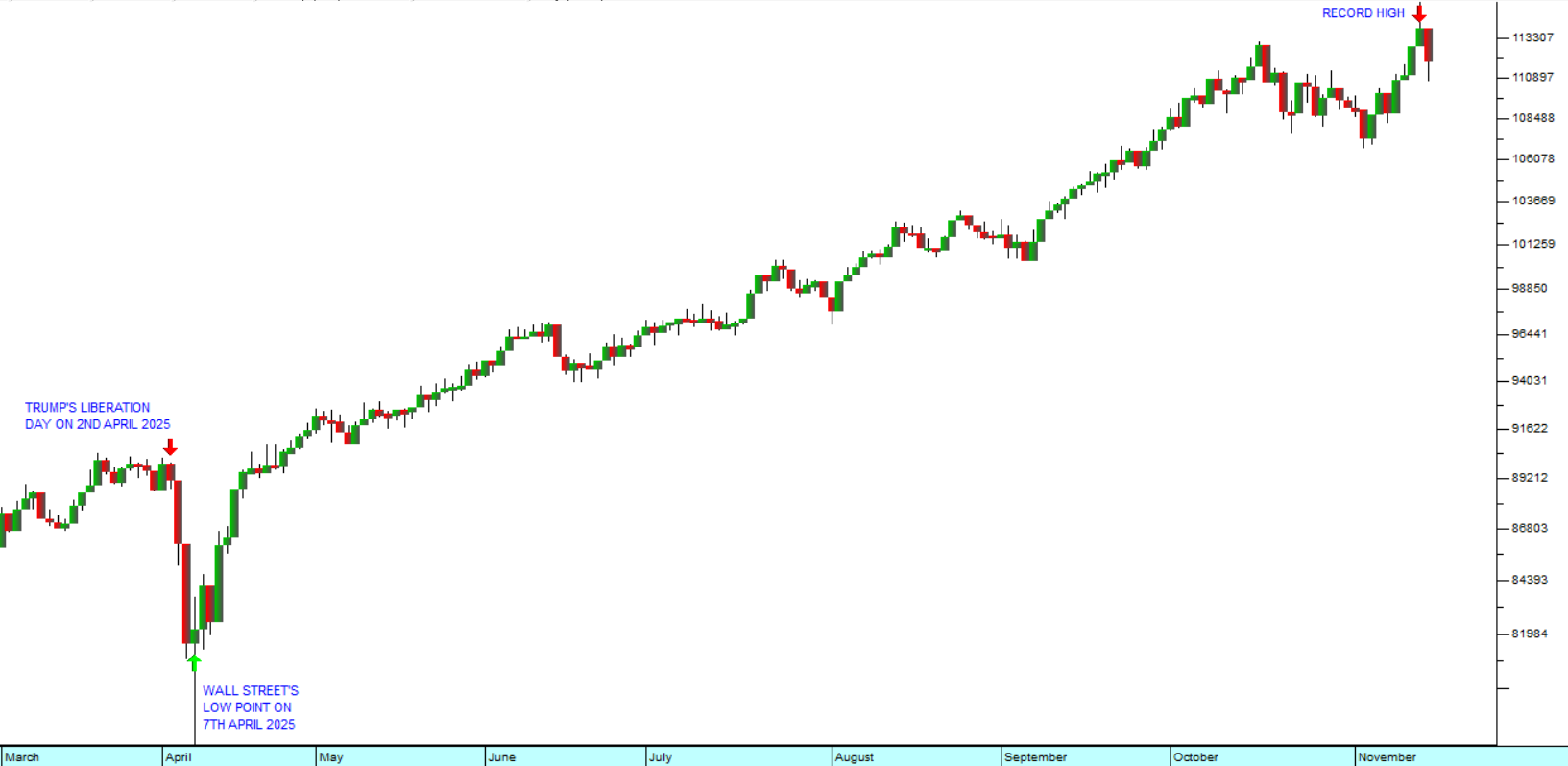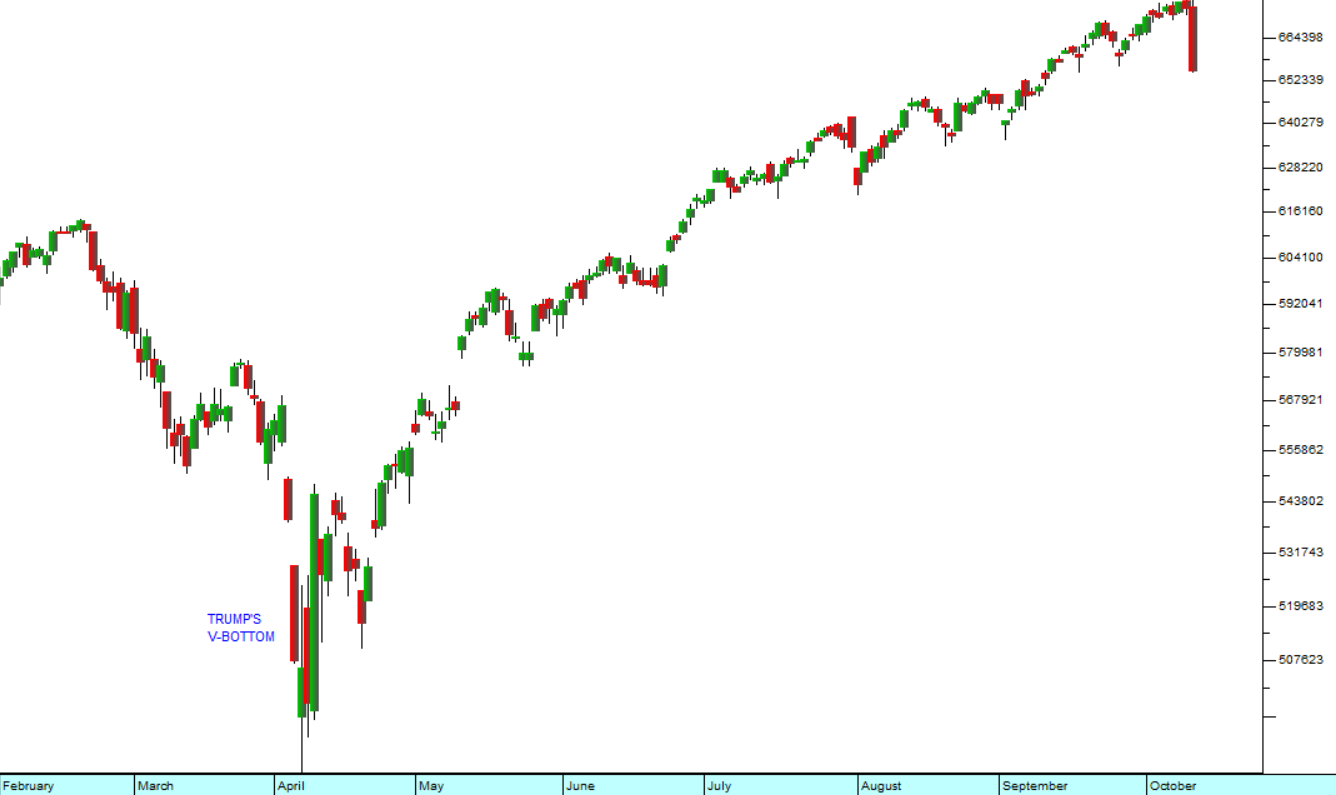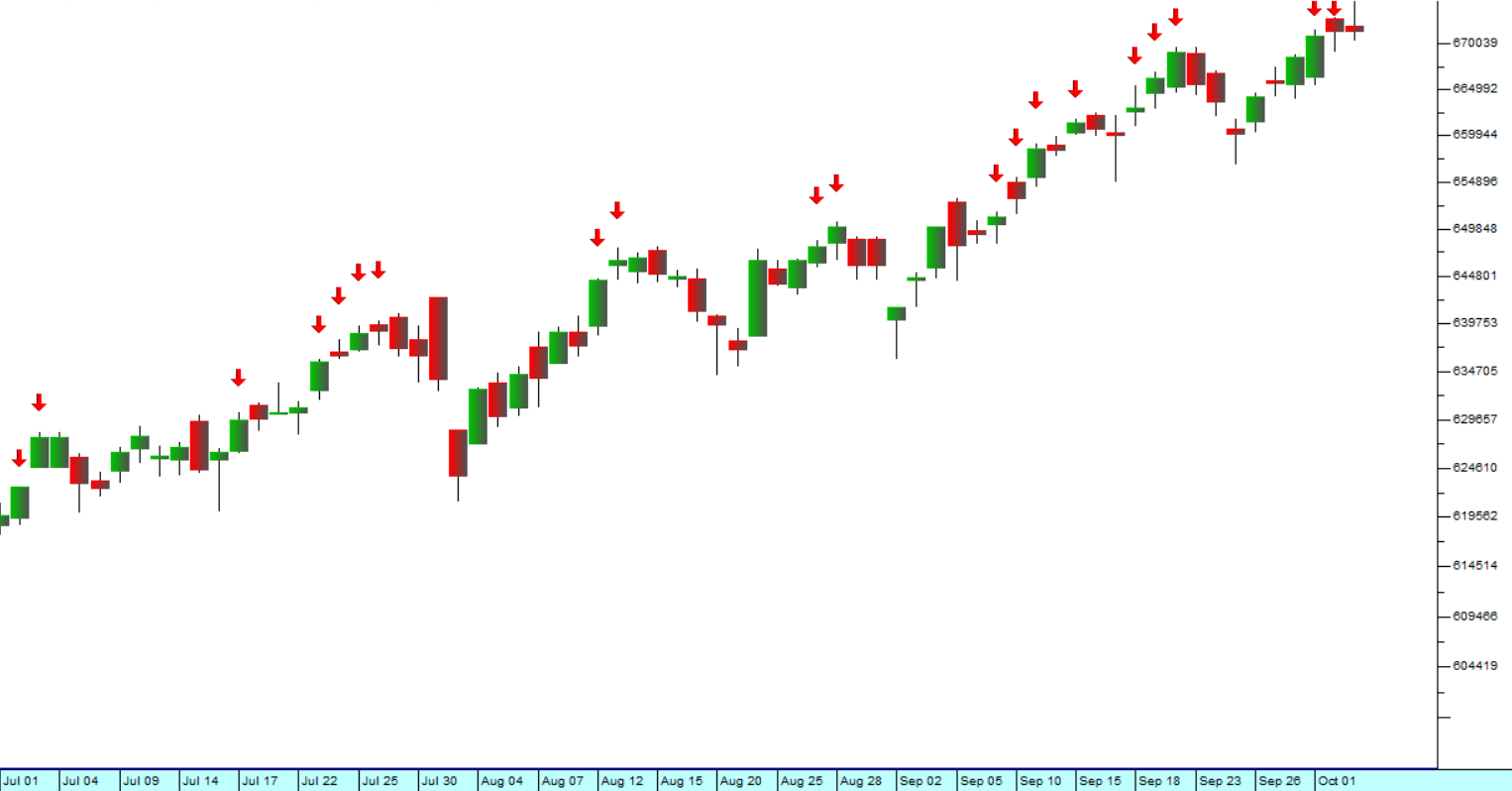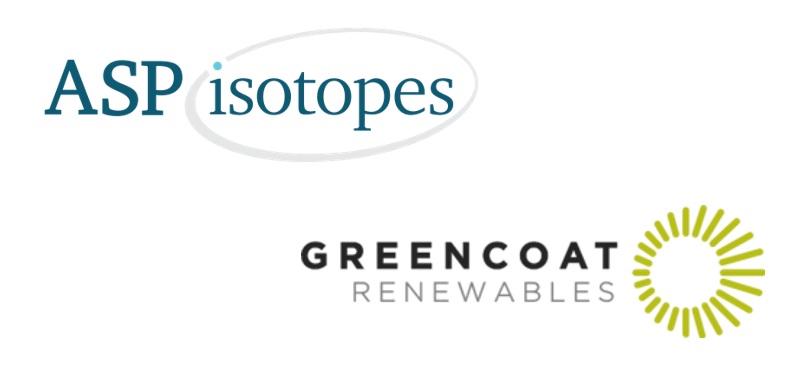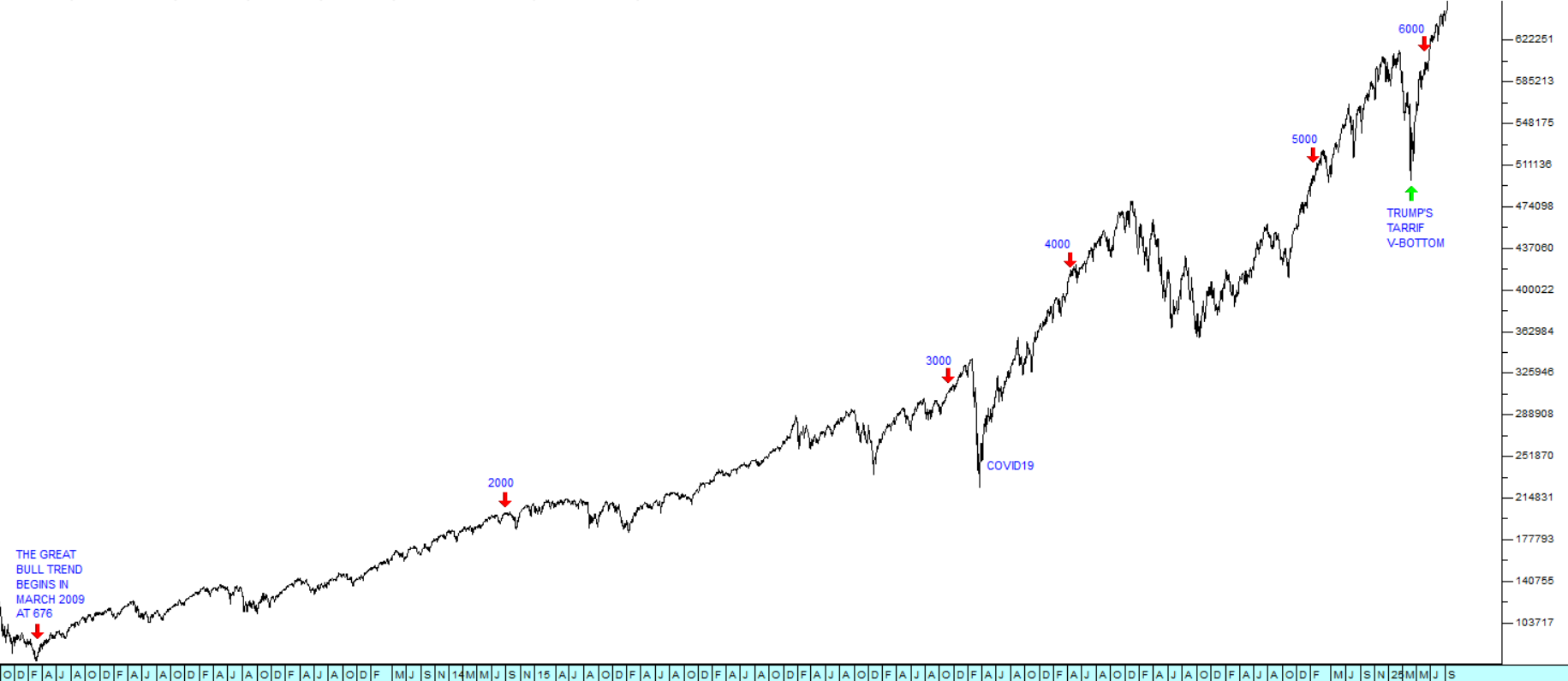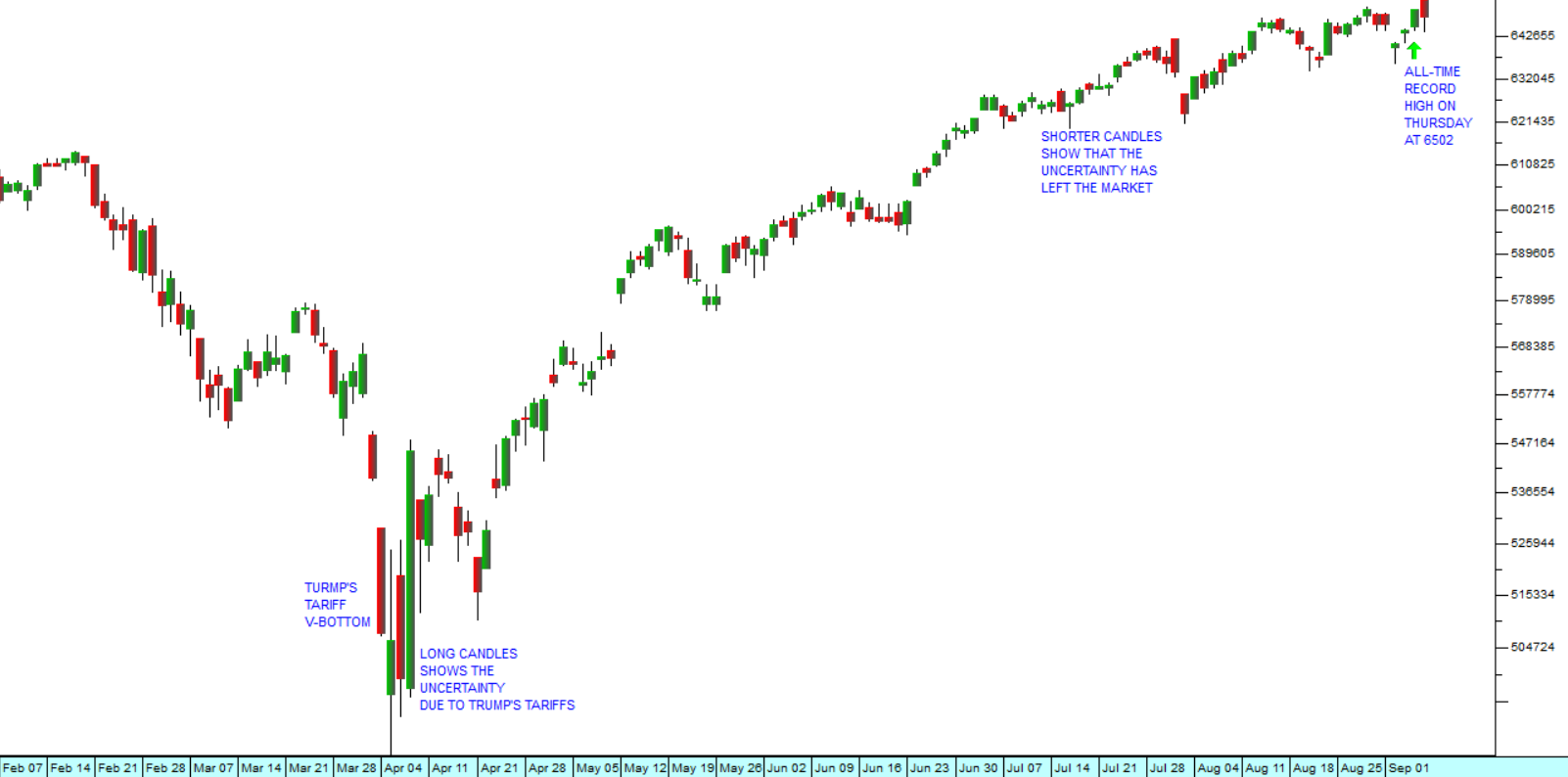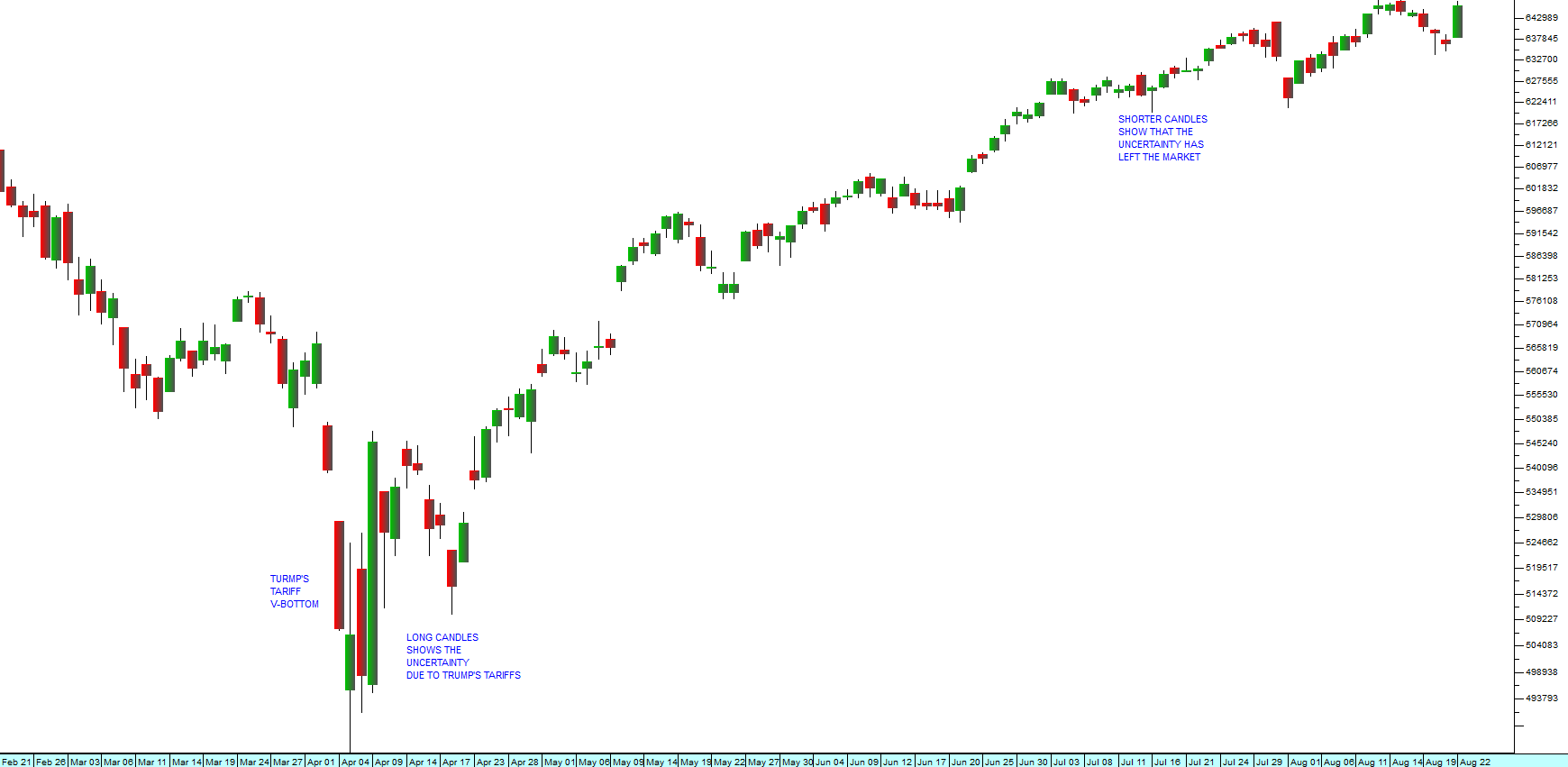Bubble
27 October 2025 By PDSNETLast Friday the S&P500 reached another new all-time record high, closing at 6791 and reaching a new intra-day record high of 6807. This is obviously an exciting time for private investors, but with each new record high the systematic risk of a bear trend or crash increases. Consider the chart:
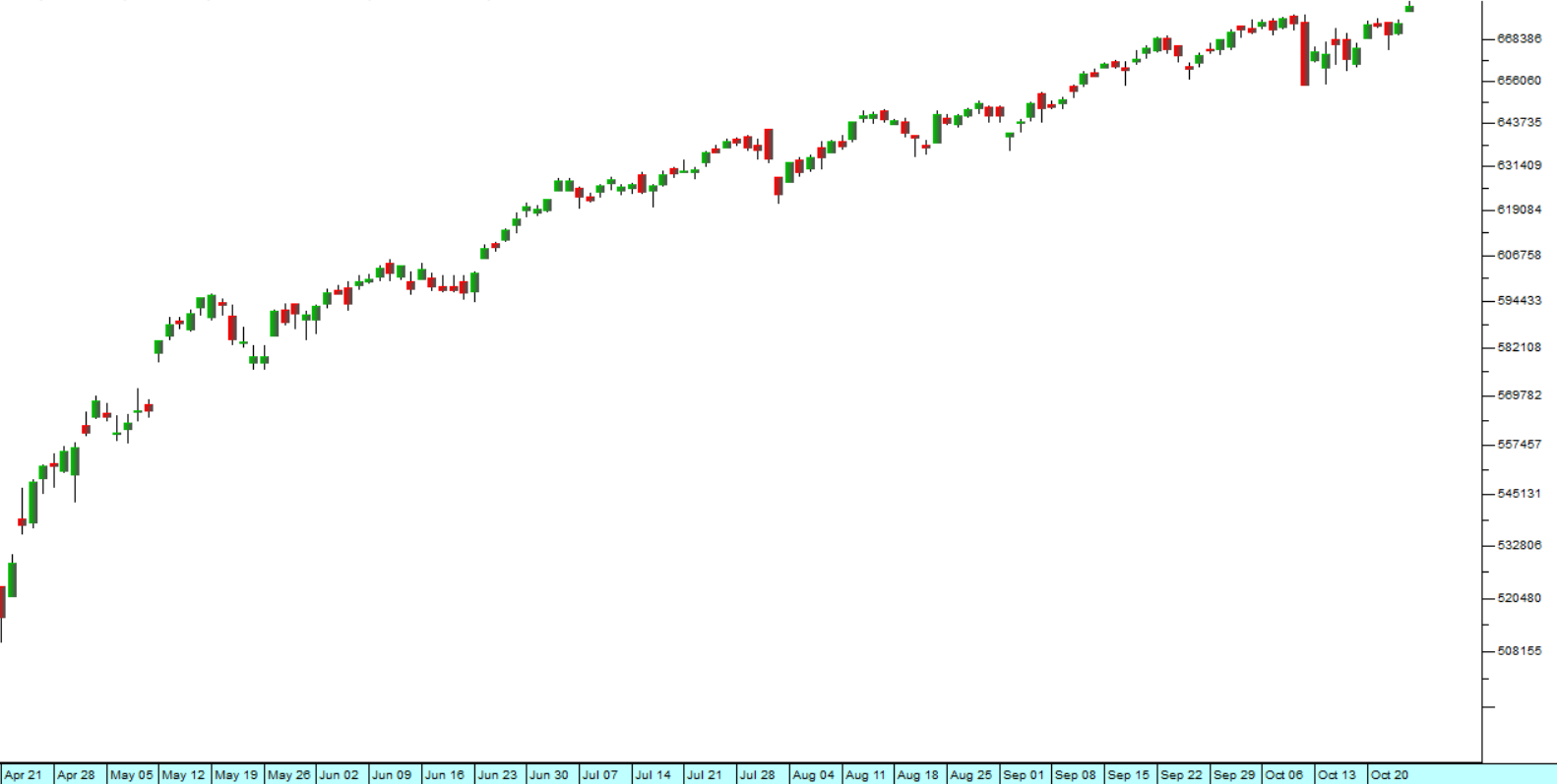
Investors all over the world are committing rising amounts of capital to AI and in our view, there is a danger of substantial over-investment. Over-investment inevitably results in an asset bubble where asset prices and especially equities lose touch with the profitability of the entities which they represent. This is what happened in July 1998 and there are some similarities to the current situation.
At that time there was immense excitement around the development of the internet and that resulted in a strong upward trend in the share market, and especially in those shares that were directly involved in the internet. The possibilities for increased productivity and profits arising from the internet seemed almost limitless and investors piled into any internet startup that managed to list. In effect, we had a run-away new listings boom.
Eventually, the level of investment became so great that the relationship between share prices and the profits of the companies which they represented broke down. All sorts of companies came to the market to try and capitalize on the flow of cash that internet companies could raise.
Right now, a similar thing seems to be happening with artificial intelligence (AI). There are early signs of over-investment and excessive investor euphoria. Nobody really knows what the impact of AI will be on the long-term profitability of S&P500 companies. But everyone is enormously optimistic – so share prices, and especially prices on the NASDAQ are making new record highs on a regular basis. The level of investment in AI is becoming excessive and some kind of a market correction seems inevitable.
This can perhaps best be seen by the circular transactions that are now starting to take place within the AI industry. Nvidia and Open AI did such a transaction recently where Open AI, which is not yet profitable, was buying large numbers of chips from Nvidia, but then it could not afford to pay for them. So Nvidia invested $100m into Open AI which Open AI then used to pay for the chips that it bought from Nvidia. This deal is remarkably similar to a deal which Open AI did with AMD to buy their chips with money that it got from buying AMD shares and then profiting from the rise in AMD shares when the deal to buy its chips was announced.
These are circular transactions, executed to ensure that sales of AI chips continue to rise, driving up share prices. Clearly, this type of transaction is not a sustainable arms-length commercial transaction. To us that is a warning sign. It is an indication that the AI chip market is over-heating and that share prices have probably run ahead of where they should be.
In our view, this type of over investment presages a crash sooner or later. So, we are warning investors who are jumping on the bandwagon of AI to maintain a very strict stop-loss strategy and be prepared to get out quickly if the market begins to turn.
Perhaps the most important point to understand is that after the 1998 internet bubble popped and share prices collapsed, the internet did not disappear. In fact, the internet is stronger and better developed now than it has ever been and it is impacting on the profits of all companies around the world. So, AI technology definitely will certainly survive the current bubble – but right now share prices are becoming excessive and a 1998 dot-com style crash is becoming increasingly probable.
DISCLAIMER
All information and data contained within the PDSnet Articles is for informational purposes only. PDSnet makes no representations as to the accuracy, completeness, suitability, or validity, of any information, and shall not be liable for any errors, omissions, or any losses, injuries, or damages arising from its display or use. Information in the PDSnet Articles are based on the author’s opinion and experience and should not be considered professional financial investment advice. The ideas and strategies should never be used without first assessing your own personal and financial situation, or without consulting a financial professional. Thoughts and opinions will also change from time to time as more information is accumulated. PDSnet reserves the right to delete any comment or opinion for any reason.
Share this article:
